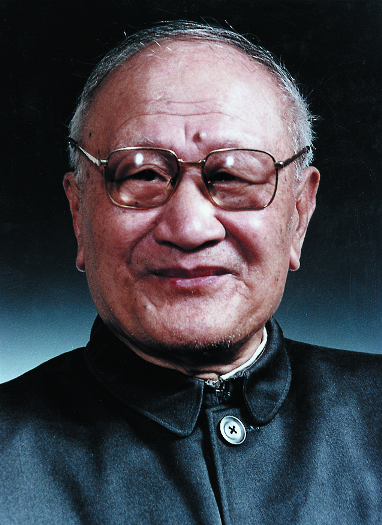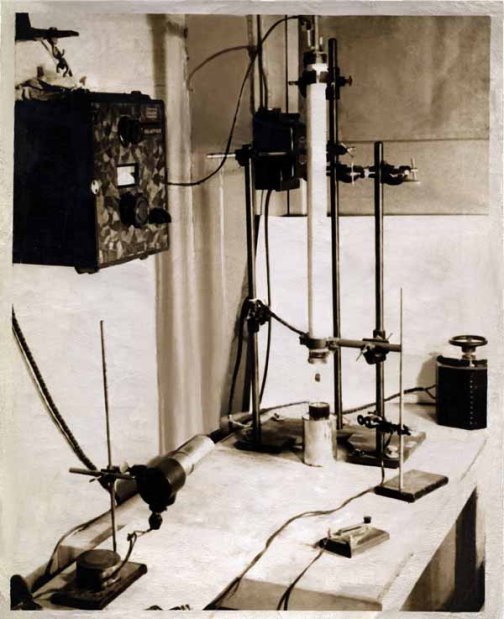
Kê Ting-sui
Kê was born in Penglai, Shandong province. He was admitted to Tsinghua University in 1930 but suffered pulmonary disease which required him to rest for two years where he earned a B.S. in physics in 1937. He obtained an M.S. in physics at Yenching University in 1940. In July 1941, Kê married He Yizhen in Shanghai and the following month they traveled together to California. Kê received his Ph.D. in physics after only pursuing it for two years at the University of California at Berkeley in 1943.[1] In the years 1943–1945 and 1945–1949, respectively, he worked as a staff member at the Massachusetts Institute of Technology and research associate at the University of Chicago.
In 1949, Kê returned to China and became a professor in physics at Tsinghua University and a research associate at the Applied Physics Laboratory of the Chinese Academy of Sciences (CAS). In October 1952, he relocated to Shenyang to participate in the establishment of the Institute of Metal Research of CAS as a research associate where he became deputy director from 1961 to 1981. In 1955, Kê was elected academician of CAS and became a member of the Mathematics and Physics Committee of CAS. In 1980, he was transferred to Hefei for the establishment of the Hefei branch of CAS where he served as its deputy director and later jointly became the first head of the Institute of Solid State Physics incepted in March 1982.
Kê Ting-sui made the world's first "torsion pendulum internal consumption meter" called Kê-type pendulum named after him, for low-frequency internal consumption measurement. It made it possible to measure the internal dissipation in the low frequency range. The Kê-type pendulum he invented was published in a paper in 1947, and was quickly adopted by scientists from all over the world, leading to the discovery of many important internal dissipation phenomena and greatly promoting the development of the field of internal dissipation research. Prof. Cahn, a famous British physical metallurgist, called it "the most genius invention of the post-war period".

Kê-type pendulum
Kê Ting-sui also found that the grain boundary internal friction peak was a common phenomenon. In the international literature, it is called Kê grain-boundary internal friction peak named after him.
Based on the experimental results of grain boundary internal depletion, Kê Ting-sui proposed that the grain boundary was a kind of viscous material, which generates stress relaxation under the action of shear stress, causing hysteretic elastic internal depletion, and he proposed the disordered atomic group model of the grain boundary, which assumes that the grain boundary region contains numerous incomplete regions of dots or disordered zones on the atomic scale.
Kê also participated in the Manhattan Project and the Long-Range Radar projects.
After the discoveries of the Kê-type pendulum and the Kê grain-boundary internal friction peak , researchers from all over the world came to visit and study, which improved the reputation of the newly built institute. It was Kê Ting-sui's research results that laid the experimental foundation for the theory of hysteroelastic internal dissipation, and thus he was internationally recognized as one of the founders of the field of internal dissipation and hysteroelasticity.
Kê Ting-sui received many awards in his lifetime for his scientific achievements, including the second and third prizes of the National Natural Science Award, the Ho Liang Ho Li Award, and the Zener Prize, the highest award in the field of internal dissipation, and in 1999 he was awarded the U.S. TMS Meier Prize, the highest international award in the field of materials science, and he was the first person in Asia to receive this award.